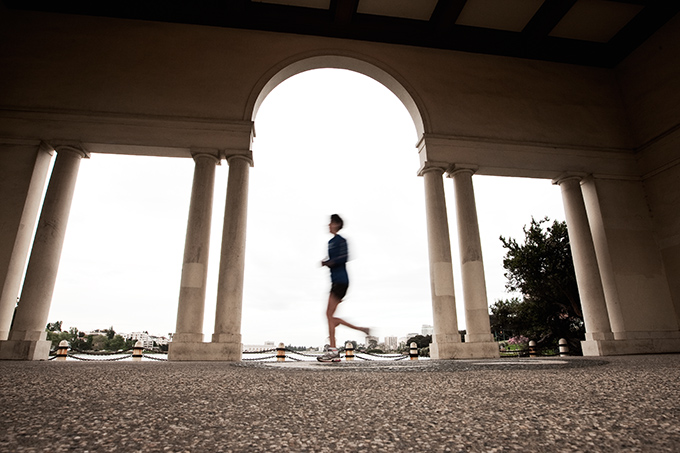Can a smartphone help you train better?
Maybe — if you’re the kind of person who gets obsessed over logging every workout, tracking your pace and counting how many miles per week you’ve averaged. And if you’re that kind of person, there’s a host of apps and gadgets that can feed your mania for recording progress.
I spent months with two apps — RunKeeper and MapMyRun — getting a taste of the quantified fitness lifestyle.
While they may not be making me a better runner, I am far more aware of how much (or little) I’m actually exercising, and that alone is a strong impetus to work out more and to do it better.
The apps show how a smartphone can turn into a collection point for an array of health and fitness data, including speed, distance, elevation, heart rate and other workout metrics such as calories and cadence (the measurement of steps or pedal strokes per minute). RunKeeper has also recently added the ability to track weight and even sleep patterns, with the right accessories.
Both MapMyRun and RunKeeper work similarly. When you start a workout, you launch the app and tell it what you’re about to do — run, walk, bike or swim. The app then measures how long you’re working out, records your path if it’s able to pick up a GPS signal, and records your heart rate if you’ve got a heart rate monitor. When you’re done, you press a button and your workout gets zapped up to the cloud, where you can view it and share it.
Both are available as free downloads for Android and iPhone, but to get the most out of these apps, you’ll need to spend some dough on a few extra gadgets. A heart-rate monitor is probably the most useful addition for exercise nuts, because it can tell you if you’re actually working out at the appropriate intensity.
For Android phones with Bluetooth support, chances are good you can use a Bluetooth heart-rate monitor. I used the Polar Wearlink+ ($80), which worked just fine. It paired with the phone, and the data was immediately available in both MapMyRun and RunKeeper.
If you’ve got an iPhone, you need a different solution, because the iPhone’s Bluetooth won’t work with the Polar Bluetooth adapter. Instead, I used Wahoo Fitness’s Fisica sensor key ($80), a small white tab that plugs into the iPhone connector port on the bottom of the phone. This adapter communicates wirelessly with any sensor that uses the Ant+ protocol, including Wahoo’s own heart-rate-monitor strap ($60). The combination is more expensive than a plain Bluetooth heart-rate strap: Yet another reason for your Android-loving friends to lord it over you.
Runkeeper can also integrate with weight data from the Withings Wi-Fi Body Scale, stride data from a Wahoo Stride Sensor ($80), and sleep and activity data from a Fitbit or Zeo device. I didn’t test these sensors, but it’s comforting to know that when I want to turn even more of my life into pure, clean numbers, it will be easy to do so.
Once the data’s in the cloud, you can view reports, of course, and also share it with your friends, either to boast about your accomplishments or to encourage one another to keep going — or maybe a little of both. And you can start to analyze trends: For instance, I log more miles on Saturdays than I do on Tuesdays. And I’m faster on my lunchtime runs than my early-morning, pre-breakfast runs.
Of the two services, Runkeeper has a cleaner, easier-to-read interface on both smartphones and its website. Runkeeper also offers voice prompts, which can tell you how far and how fast you’ve gone at various intervals.
Apart from the voice prompts, MapMyRun matches Runkeeper feature-for-feature, but I found it harder to navigate, and the website offers fewer options for slicing and dicing the data. It’s also got more advertisements in both the app and on the website (though you can pay to make the ads go away).
Both apps have free versions, but to make the most of both apps, you’ll need to pay something. Runkeeper offers “Runkeeper Elite” subscriptions for $5 per month or $20 per year. They offer real-time run tracking (so your friends can keep an eye on you as you run — including during races) and a wider variety of charts to analyze your performance trends.
MapMyRun offers various paid options ranging from $6 per month to $20 per month (or $30 to $100 per year), which give you access to additional advanced training charts and reports, and also eliminate ads from the interface.
After using both apps for months (in Runkeeper’s case, I’ve used it for years) am I a better runner? Probably, but it’s not because the data has given me superhuman self-coaching abilities. Rather it’s that the mere act of measuring my activity has made me pay more attention to it.
If I were a more serious runner or had a definite exercise goal like losing weight, these apps and gadgets would give me a valuable edge. As it is, they help me stay on track — and for now, that seems to be just what I need.
Photo by Jim Merithew
Read the original: Exercise Accessories Help You Measure Up | Product Reviews | Wired.com.
